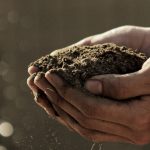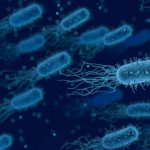Bacterial and other microbes exist in vast quantities in all environments with plant matter, playing a crucial role in their biological processes.
Microbes break down organic matter and naturally occurring chemical compounds into new substances and nutrients that trees and other flora use to grow and photosynthesise. Different microbes work together symbiotically to facilitate and organise these processes.
In the same way, these ‘vegetable’ microbes process hydrocarbons and other pollutants. Hydrocarbons are one of the most common and damaging pollutants. They enter the environment from domestic, commercial, and industrial waste, effluents, landfill seepage, oil spills, and airborne contamination.
Soil remediation & rehabilitation with bacterial and fungi microbes
Harnessing the biological capabilities of microbes offers us the most effective and environmentally friendly way of dealing with this pollution. It is done through specific techniques, with products that contain concentrated microbes, as well as the ‘food’ they need to do their jobs – such as oxygen and water.
The microbial clean-up process is called bioremediation. It can be done on site (in situ), or the soil can be removed to be cleaned (ex situ). In situ bioremediation is more efficient and cost effective, and more common. Methods may differ, but the processes by which the microbes break down the hydrocarbons is the same.
How microbes break down pollutants – ‘in situ’ bioremediation:
Bioventing
Ideal for deep hydrocarbon pollution of soils and underlaying substrates, using ‘resident microbes’. Air is pumped deep into the ground to activate the microbes. Pollutants from fuels such as gasoline, diesel, jet fuel and kerosene are then broken down. Toxic components as acetone, phenols, toluene, and benzene are gradually rendered into non-toxic, or less toxic, substances and organic by-products.
Phytoremediation & Phytodegradation
This method combines the toxin degradation capabilities of microbes with vegetable enzymes.
Bacterial microbes in the soil break down hydrocarbons while promoting plant growth in tandem with fungi. The healthy plants then take up rendered substances and remaining toxins, binding them, then transporting them from roots to leaves, where enzymes break them down into non-toxic compounds, water and carbon.
This is a long-term remediation technique that depends on the activities of microbes as well as their symbiotic relationship with each other and the right kinds of plants. While the process is slow, it is an excellent long-term remediation technique. It stabilises the soil, promoting the environment’s return to a natural state, restoring optimal soil health and microbial relationships, removing or rendering pollutants, and breaking down toxins into inert or beneficial compounds and even nutrients.

Microbial augmentation and amendments:
In each case, the existing (indigenous) microorganisms usually need to be augmented with added microbes. This is because long-term environmental pollution from landfill seepage, or air, water, and effluent pollution quickly results in unbalanced and degraded soil biomes – with many remaining microbes inactive without their ‘companion’ microbes.
- To ensure the above processes work, more microbes, as well as specific types of microbes that might be absent, must be added, along with amendments that kick-start microbial activity and symbiosis.
- Nutrient rich amendments such as molasses, hydrogel, water, air, or oxygen-producing chemicals are added to activate, maximise and maintain microbial biodegradation processes.
- Importantly, for these processes to be effective, the right microbes need to be present in optimal amounts. The right microbes for a particular soil type, flora or environment need to be present in the right proportions, along with the right nutrients and the right temperatures.
There’s a lot of science that goes into making microbial bioremediation work properly. Done right, it’s exceptionally effective; many soil biomes can be fully restored, water purified or cleaned up, and environments transformed.
In the case of oil spills (including at sea – where marine microbes are employed to clean up) it might be a one-off remediation. However, pervasive environmental pollution can necessitate regular clean-ups, or adjusted follow-up biodegradation of hydrocarbons and other pollutants for effective, long lasting pollution control.







